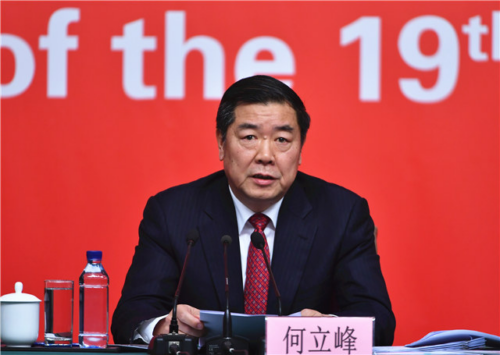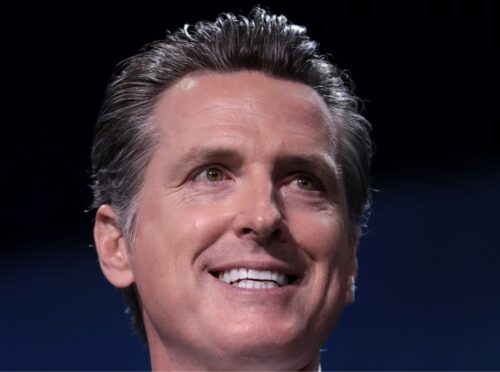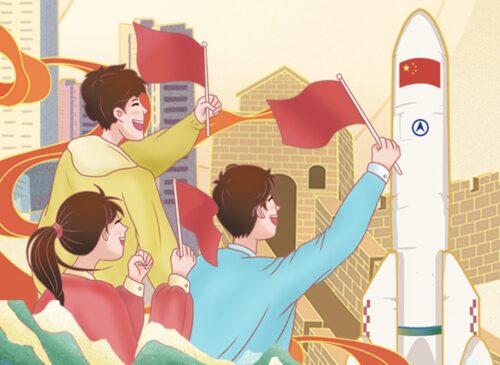U.S., Japan, and Australia to help India compete with China’s vaccine diplomacy
One billion doses of the Johnson & Johnson vaccine will be produced in India and distributed to Southeast Asian countries, with the help of the U.S., Japan, and Australia. The initiative, an output of the informal “Quad” alliance, is an attempt to counter Chinese vaccine diplomacy in the region.

Last October, in one of the last major Asia foreign policy moves of the Trump administration, then Secretary of State Mike Pompeo went on a China-bashing tour of the region.
- In Tokyo, he met with the foreign ministers of Australia, India, and Japan, urging them to join him in directly confronting what he called the Chinese Communist Party’s “exploitation, corruption, and coercion.”
- Pompeo’s message was met with a noticeable lack of endorsement from the other foreign ministers, and the meeting ended with no joint statement.
Today, the same four countries held their first leader-level “Quad” summit, named after the Quadrilateral Security Dialogue first held in 2007 between Australia, India, Japan, and the U.S., but mostly dormant until 2017.
- This time, there was a joint statement, and while it made no direct mention of China, it was heavy on language about shared democratic values, preserving a “free, open, inclusive, and resilient Indo-Pacific,” and even preventing “coercion.”
- Though each country has security or political conflicts with China — Australia and Beijing have icy relations over a list of political grievances, India has a simmering border conflict, and Japan has contested territorial claims in the East China Sea — the joint statement appeared to emphasize the global challenges of COVID-19 and climate change as much or more than “security challenges facing the region.”
The key outcome was focused on vaccines, not national security: 1 billion doses of the Johnson & Johnson vaccine will be manufactured in India, financed by the U.S. and Japan, and distributed by Australia, according to the Financial Times.
- The shots will be distributed “to south-east Asian nations in an effort to counter Chinese influence in the Indo-Pacific region,” the FT says. Chinese vaccine diplomacy has included several regions, but Southeast Asia is a focus, particularly Indonesia.
- Michael Green, former Asia adviser to George W. Bush, told the FT: “The provision of public goods is not something that China can call containment, but it shows the limits of Beijing’s influence.”
- Chinese foreign ministry spokesperson Zhào Lìjiān’s 赵立坚 reaction to the Quad meeting was noticeably subdued, merely suggesting the countries “follow the principles of openness, inclusiveness and win-win results.” (Last year, Chinese Vice Foreign Minister Luó Zhàohuī 罗照辉 called the Quad “an anti-China front line, also known as the mini NATO.”)
- India has a formidable pharmaceutical industry, and according to Bloomberg reporting last month, had delivered far more shots to its neighboring countries than China, albeit with less hoopla.
It’s still an open question how far the “Quad” can go in its coordination, particularly when it comes to more sensitive national security issues or explicitly addressing shared anxieties about China. When it comes to the U.S. and India, the Wall Street Journal notes that the Biden administration would need to first “smooth over disagreements that include human rights and New Delhi’s acquisition of a Russian defense system.”
But at least as far as vaccines go, the combination of resources from these four countries does seem to be, in the words of the Chinese foreign ministry, a “win-win.”
See also, on the Quad and bilateral tensions between its members and China:
- How Biden can make the Quad endure / Carnegie Endowment for International Peace
- U.S. criticises China’s Hong Kong move, set to raise Xinjiang genocide charge in talks / Reuters
- China warns U.S. to stay out of Hong Kong affairs ahead of Alaska meet / Reuters
- China tells UN Australia’s offshore detention centres violate human rights, don’t have adequate conditions / Australian ABC
- India likely to block China’s Huawei over security fears: officials / Reuters
- Japan considers sending in troops to help meet China’s Diaoyu challenge / SCMP (porous paywall)






